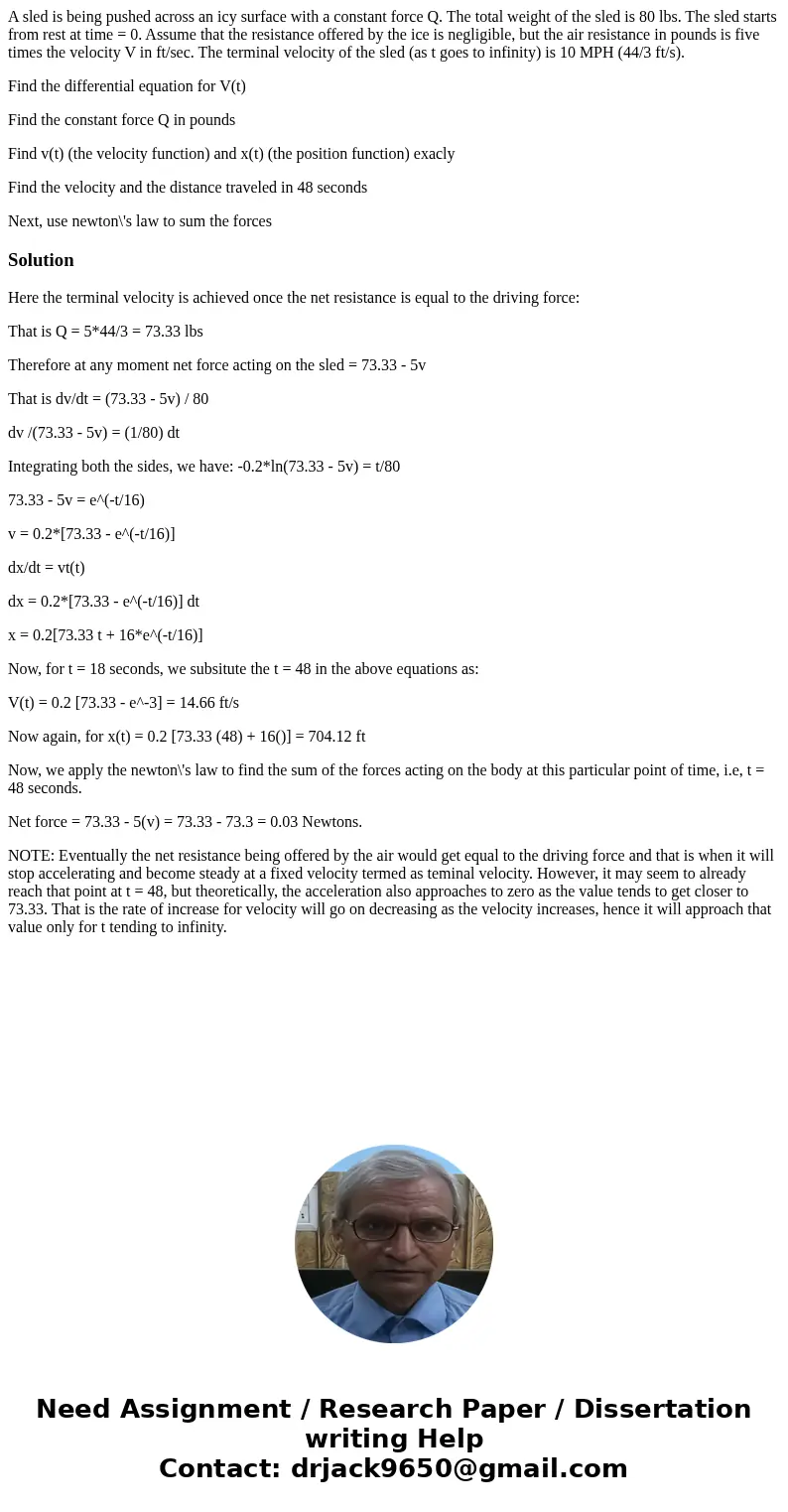A sled is being pushed across an icy surface with a constant
A sled is being pushed across an icy surface with a constant force Q. The total weight of the sled is 80 lbs. The sled starts from rest at time = 0. Assume that the resistance offered by the ice is negligible, but the air resistance in pounds is five times the velocity V in ft/sec. The terminal velocity of the sled (as t goes to infinity) is 10 MPH (44/3 ft/s).
Find the differential equation for V(t)
Find the constant force Q in pounds
Find v(t) (the velocity function) and x(t) (the position function) exacly
Find the velocity and the distance traveled in 48 seconds
Next, use newton\'s law to sum the forces
Solution
Here the terminal velocity is achieved once the net resistance is equal to the driving force:
That is Q = 5*44/3 = 73.33 lbs
Therefore at any moment net force acting on the sled = 73.33 - 5v
That is dv/dt = (73.33 - 5v) / 80
dv /(73.33 - 5v) = (1/80) dt
Integrating both the sides, we have: -0.2*ln(73.33 - 5v) = t/80
73.33 - 5v = e^(-t/16)
v = 0.2*[73.33 - e^(-t/16)]
dx/dt = vt(t)
dx = 0.2*[73.33 - e^(-t/16)] dt
x = 0.2[73.33 t + 16*e^(-t/16)]
Now, for t = 18 seconds, we subsitute the t = 48 in the above equations as:
V(t) = 0.2 [73.33 - e^-3] = 14.66 ft/s
Now again, for x(t) = 0.2 [73.33 (48) + 16()] = 704.12 ft
Now, we apply the newton\'s law to find the sum of the forces acting on the body at this particular point of time, i.e, t = 48 seconds.
Net force = 73.33 - 5(v) = 73.33 - 73.3 = 0.03 Newtons.
NOTE: Eventually the net resistance being offered by the air would get equal to the driving force and that is when it will stop accelerating and become steady at a fixed velocity termed as teminal velocity. However, it may seem to already reach that point at t = 48, but theoretically, the acceleration also approaches to zero as the value tends to get closer to 73.33. That is the rate of increase for velocity will go on decreasing as the velocity increases, hence it will approach that value only for t tending to infinity.

 Homework Sourse
Homework Sourse